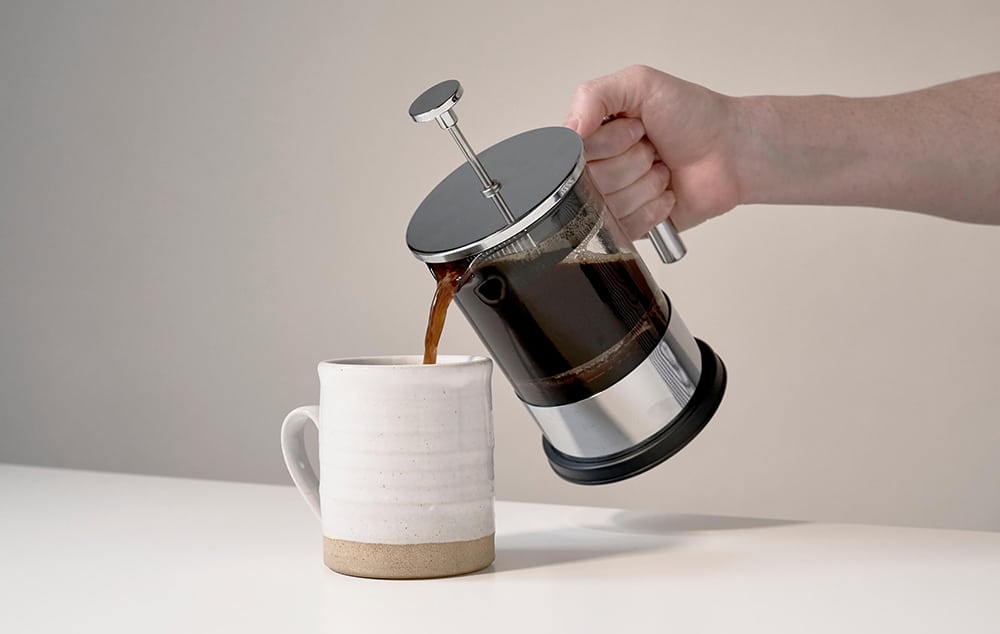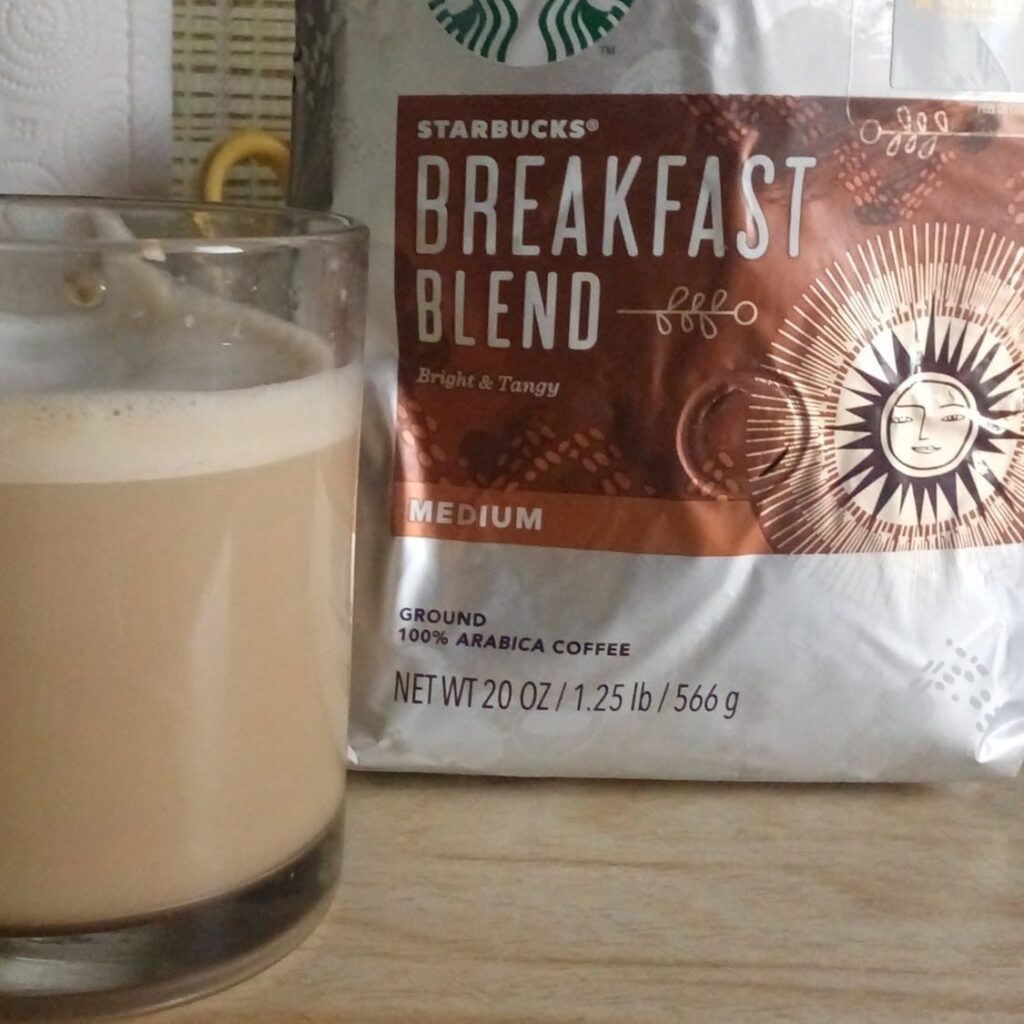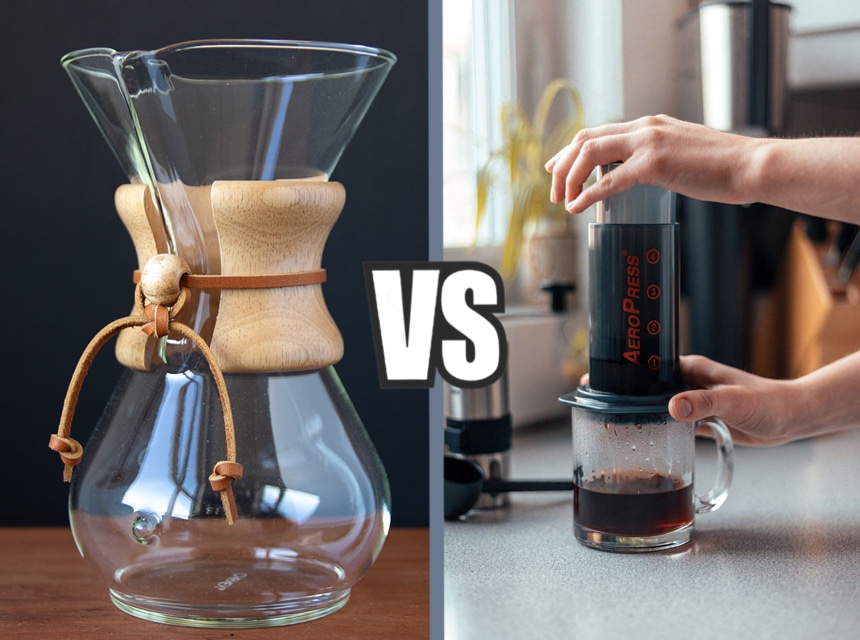

When it comes to café au lait vs. latte, there is no clear winner in this competition. It is all going to depend on how you prefer your barista drink to be styled and if you prefer regular coffee to espresso shots. The café au lait is made with a strong brewed regular coffee that fills half the cup, and hot milk fills up the rest of the cup. A latte is a triple threat with a shot or two of bold brewed espresso, topped with steamed milk and then a thin layer of microfoam on top. Some people like to add flavorings such as caramel, peppermint, or chocolate to their lattes, whereas it is not really a café au lait if you add a flavoring to it and a gourmand travesty to do so. If the latte drink is iced, flavored syrup, ice, and whipped cream might be added to the mix to create a brand new concoction called an iced macchiato.
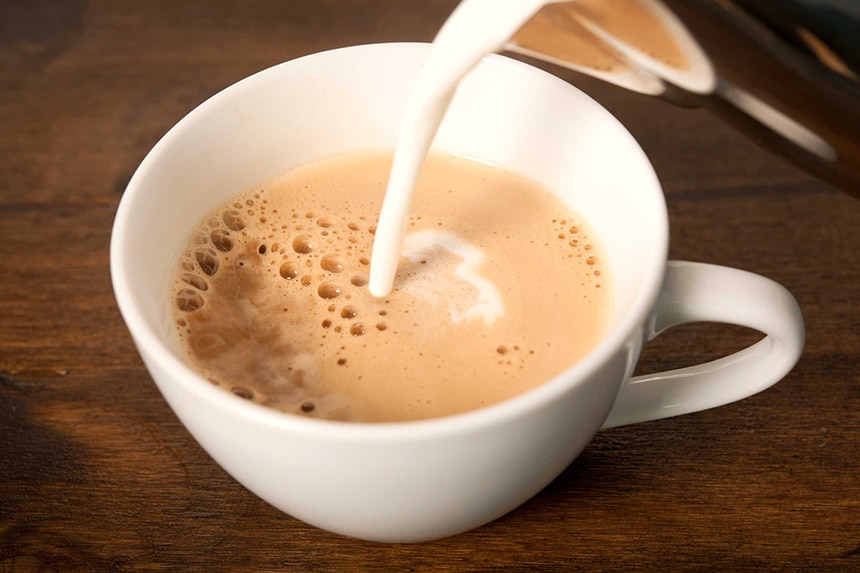
Café au lait translates from French to English to mean coffee with milk. It is typically made with a drip coffee machine or French Press. The coffee fills half the cup, and then the rest of the cup is filled with hot (not steamed) milk. The milk is warmed in a saucepan over low heat. Sometimes the added milk is scalded almost to the boiling point, as is the case with the American Café Au Lait native to coffeehouses in New Orleans, which also contains brewed ground grains of chicory. Otherwise, the classic combination of coffee and milk is considered to be the French style of serving strong coffee.
Any strong coffee can be used to make a Café au Lait as long as it is brewed as regular hot coffee and not made in an espresso machine. It is typically served “straight,” which just means that the milk is not frothed or steamed and there is no foam. A medium-roast coffee is best for this type of caffeinated drink, as it goes best with hot milk. If the roast is too dark, the hot milk and coffee concoction might taste a little bitter. A perfect bold roast would be illy Intenso Bold Roast Torrefaction Intensiono, which is a dark roast made from Arabica beans. If you want to learn more about the different kinds of roasts, you might be interested in how coffee is made.
According to Calorie King, there are only 70 calories in an 8oz. serving of café au lait.
There are a number of factors that affect how caffeinated your cup of coffee is going to be. According to a Healthline article Trusted Source How Much Caffeine in a Cup of Coffee? A Detailed Guide An average cup of coffee contains 95 mg of caffeine, but some types contain over 500 mg. This article lists the caffeine content in different coffee types. www.healthline.com , it depends on the type of coffee bean, the roast, and the size of the cup. Typically a serving of 8 oz brewed coffee contains about 95 mg of caffeine.
Here are the pros and cons of a Café au Lait.
Pros
Cons
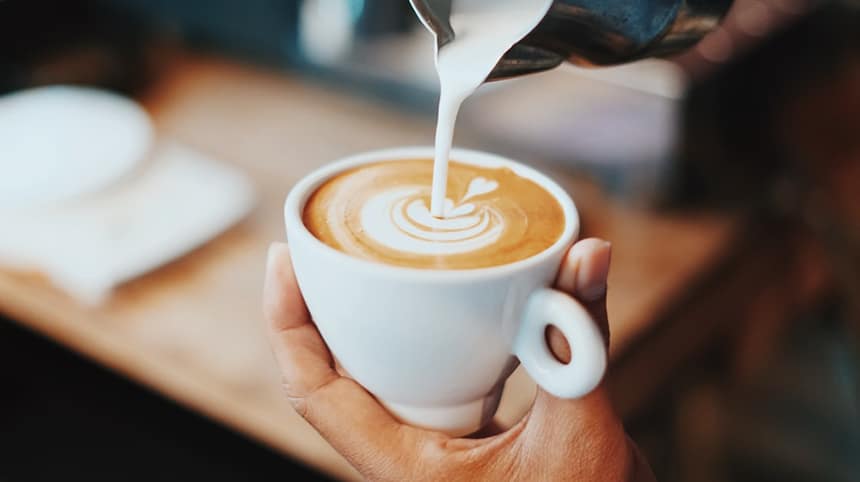
The popular café latte is a triple threat with a shot of espresso at the bottom of the cup. Steamed milk fills the cup to the top and is then layered with a touch of foam. A flavoring in the form of a syrup is also often added to the drink to add interest. If you don’t have an espresso machine, then you might want to look into buying a Primula stovetop espresso maker which pumps steam through coffee grounds.
The best type of coffee to use in a latte is basically whatever your favorite type of espresso, but most baristas would use a strong dark to medium roast to make this drink. There is also a variation of a latte called a mocha latte where espresso is topped off with hot chocolate, steamed milk, and then whipped cream.
According to an article in The Guardian Trusted Source Milk can have a big impact on the taste of coffee – but which brand is best? | Milk | The Guardian Baristas claim that the milk you choose affects the flavour and texture of your brew. From Cravendale to Yeo Valley Organic, here’s what the experts are putting in their coffee. www.theguardian.com , it is not so much the type of coffee but the presence of a quality 2% milk with a high protein content that makes the best tasting latte. In addition, high protein milk also helps to create the best microbubbles in the top layer of foam. This really matters, too, if drawing designs in the top of your latte is part of your home barista style. It is quite easy to make a simple heart or leaf in the microfoam of a latte by using a toothpick or tip of a spoon. This article has some great information about creating latte art Trusted Source How to Make Latte Art (with Pictures) - wikiHow While many agree that making good espresso is an art within itself, latte art refers to patterns made in the foam topping espresso drinks. www.wikihow.com .
According to the USDA, there are 103 calories in an 8 oz. latte made with 2% milk, but lattes are often 16oz in size, making each one 206 calories. This calorie estimate is average for an unflavored latte. Hundreds of calories can be added to a barista beverage simply by adding a couple of shots of syrup unless the coffee is sugar-free.
A latte is considered to be very high in caffeine with 77 mg of caffeine in 8 oz, yet also consider that most lattes are made in a 16 oz cup, upping the caffeine level to 154 mg.
Here are the pros and cons of drinking a latte.
Pros
Cons
An iced latte is a mixed drink made with a single espresso shot and low-fat milk (preferable 2%) and topped with ice cubes. An iced macchiato can almost be called an upside-down latte, except it is made by adding whole milk to a glass of ice and then pouring two espresso shots on top. The fact that a macchiato contains two strong espresso shots does make it stronger, but keep in mind that there is actually such a thing as a double latte, which would contain 2 shots of espresso.
If you want a stronger, iced dairy-based drink, you will likely enjoy a macchiato more than the latte, simply for the hit of caffeine it offers. If you are on a diet, you might want to consider sipping an iced latte which is made with low-fat milk. However, if you are on a keto diet, where you are trying to lose weight by eliminating carbs, then it is probably better to have a macchiato made with full fat, high protein whole milk.

The latte is usually a lot stronger because it is made with espresso shots rather than drip coffee or French press coffee. Another big difference is that a café au lait is probably a bit easier on the waistline because it is made with 2% milk, whereas the latte is often made with full-fat milk, although you can alter the recipe to make it with less fatty milk or with non-dairy milk. If you are trying to avoid sugar, then a café au lait is probably a better choice for you, and it is a good idea to stay away from flavored lattes that contain sugary syrups. Now that you know all about the pros and cons of the café au lait vs. latte, you will hopefully be better qualified to choose which one suits your lifestyle.
